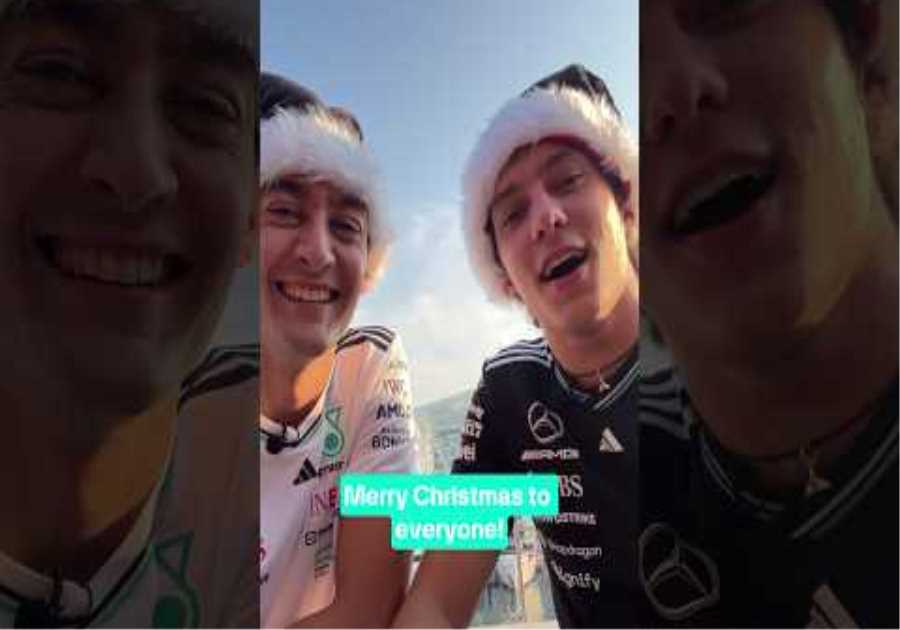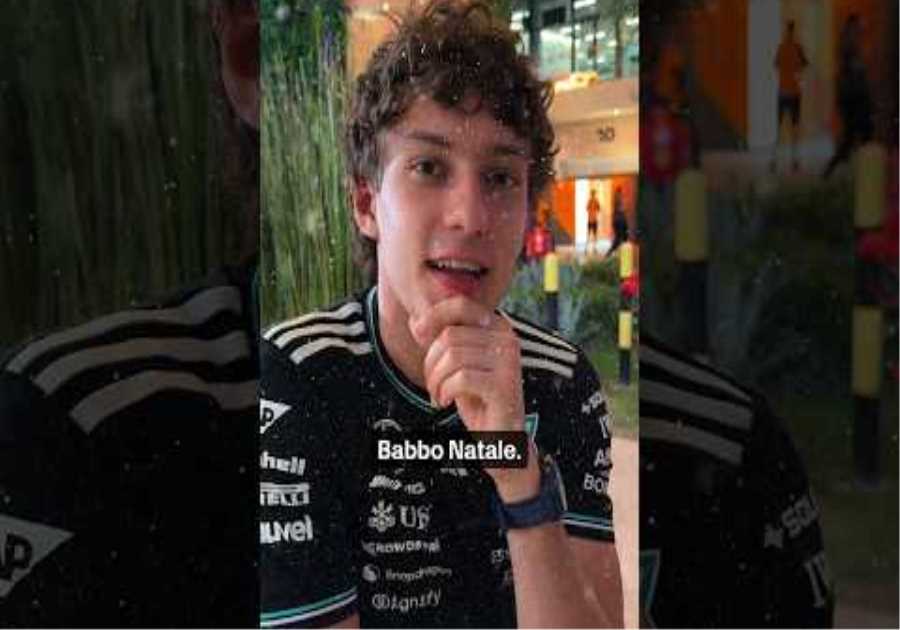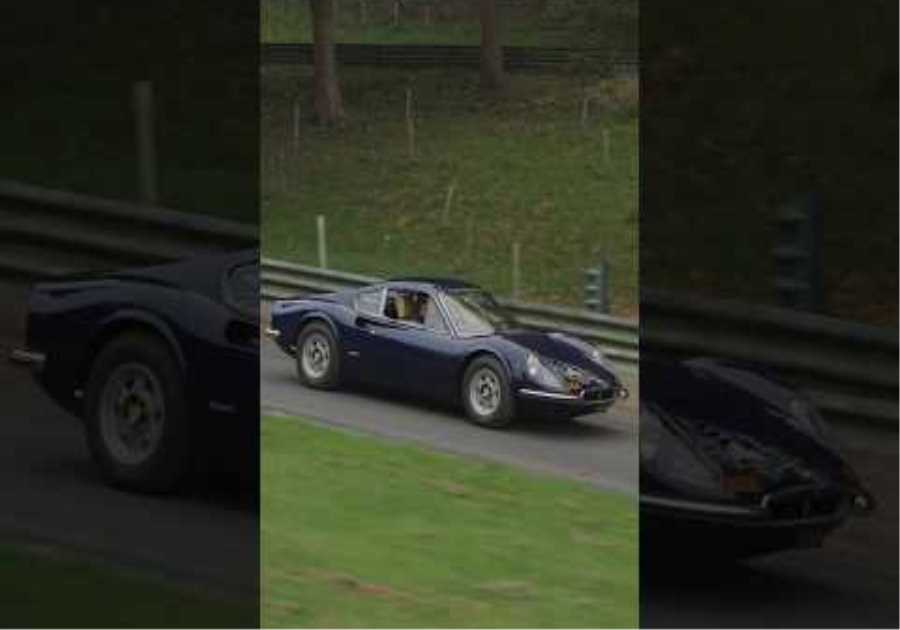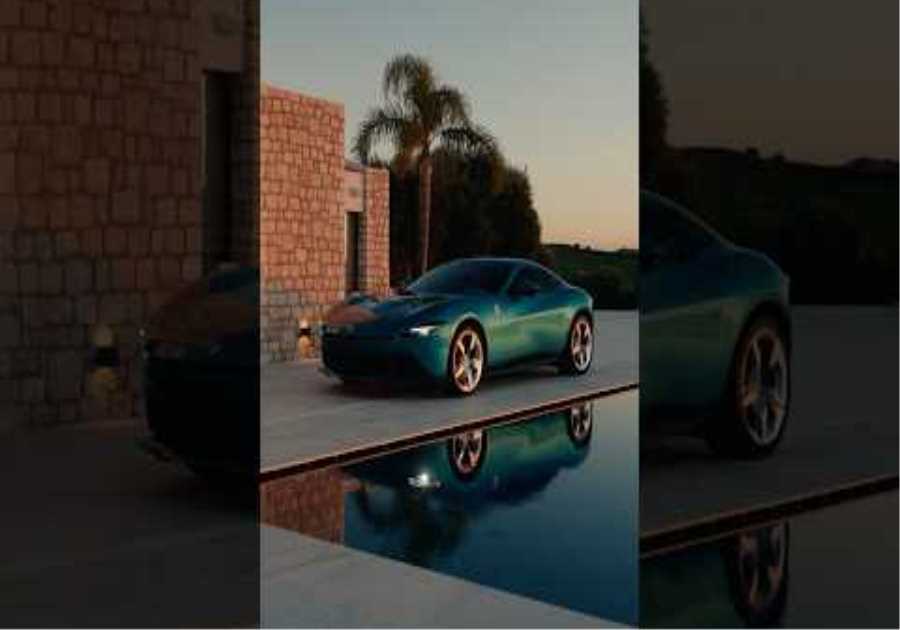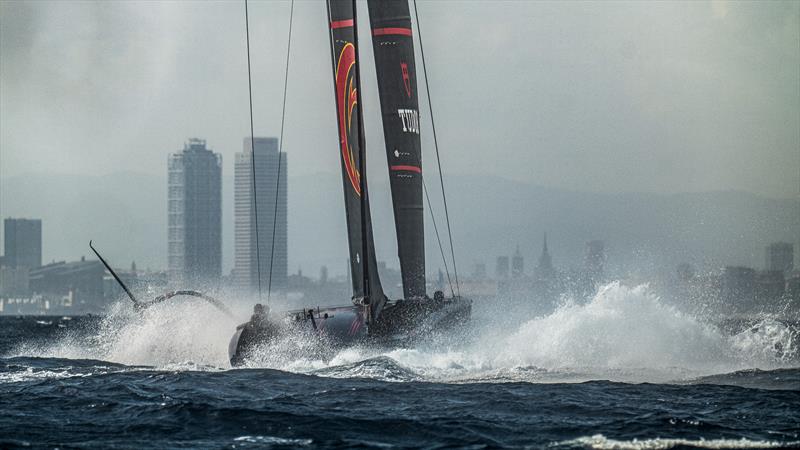
Cup Critiqued: AC37 – December 2022 Rankings – Who’s ahead?
by Richard Gladwell Sail-World NZ 13 Dec 04:46 PST
14 December 2022

Alinghi Red Bull Racing – AC75 – October 19, 2022 – Barcelona © Alex Carabi / America’s Cup


Just over a year ago, in mid-November 2021, the Protocol governing the 37th America’s Cup was announced.
Subsequently, five teams entered the event. The venue has been announced for Barcelona, with the regatta set down for August-October 2024 – a month following Paris 2024 Olympics. The Match itself begins on October 12, 2024. It will be the fourth of eight America’s Cup Matches since 2000 where the Match has not been contested on the home waters of the Defending Club.
In previous America’s Cup cycles, with one exception, the teams have been able to build two race boats and run a two-boat testing program. That was in 2017 – which was AC45 test boats and just a single, largely one-design AC50 allowed. But the Kiwis, with the clever use of a rudder gantry, could mimic the foiling geometry and other characterises of an AC50 and effectively ran a two-boat AC50 program.
For the 2024 Cup, the teams have to decide which of several directions they will take on their pathway to the Cup.
To recap, for the 2024 Cup, teams can build, test or train in any combination of five types of boats:
- 1. An AC75 Version A boat owned or acquired
- 2. An AC75 Version B raceboat owned or acquired that was used in the 2021 America’s Cup.
- 3. An AC40 One Design (AC40-OD), a 12-metre foiling monohull from Emirates Team NZ’s design team and built by McConaghy boats
- 4. A LEQ12 – 12-metre foiling monohull commissioned by the challenging/defence team. If an AC40 is taken out of one design configuration, it becomes a LEQ12.
- 5. An AC75 to Version 2 of the AC75 class rule, which will be the team’s America’s Cup Class raceboat for the 2024 America’s Cup.
The only requirements in the 37th America’s Cup are that a team must:
- Build one race boat to Version 2 of the AC75 Class rule – this is their race boat in the 2024 America’s Cup (Option 5)
- Buy one AC40 One Design to sail in the America’s Cup Preliminary Events (Option 3).
- A team can only sail one AC75 yacht at a time. However, they can sail more than one AC40 OD or a LEQ12 against an AC40 OD.
All teams are running a strategy combining at least three of the five options. For competitive reasons, they have yet to declare their pathway to the Cup. However, in two cases, the direction of travel is becoming evident, and certainly, the teams will know or have some idea of what their competitors are doing.
In theory, a team could rely on a design computer/simulation only approach – using only artificial intelligence, computer design tools and simulation packages. Their sailing team could get race sharp by competing on the SailGP or similar circuits – as several current teams/team members are doing. Then they go straight into AC75 commissioning and testing.
The minimum for a tech-only strategy is to have one AC75 Version 2 raceboat and purchase one AC40 One Design for crew training and the required competition in the Preliminary Events. (Options 3 & 5).
Over the coming twenty months, expect the teams to emerge from “stealth mode” as snippets of their strategy are leaked/uncovered along the way.
This “stealth mode” that is a feature of the 37th America’s Cup and is strengthened further by the prohibition on teams sailing against each other – except in permitted events.
Spying banned
For the first time in Cup history, teams are prohibited from undertaking any reconnaissance activities against other teams.
For the 2024 Cup, the teams have to rely on the eyes and lens of the AC37 Joint Recon team, which are independent of all teams. The daily information gathered, including still and video images, plus a statistical report and team member interview, goes into an information repository (officially known as the Reconnaissance File System) to which all teams and selected media (including Sail-World) have access at the same time as the teams.
Rather than being an undercover operation, recon content is now an open book.
As with previous Cups, time is the most precious commodity – and that’s running out fast.
In four months, the Challengers will have to sign off the final hull design (or platform) for their raceboat, with the Defenders having to do the same a couple of months later.
Sign-off for components other than the platform will occur progressively, depending on construction lead times. Sails are probably the last to stop development, which can occur up until the start of the first race of the Match.
In the last Cup, Luna Rossa kept their sail development program running and introduced new sails each round – with significant speed and performance gains, winning the Challenger Final and going 3-3 after the first six races in the America’s Cup Match.
How is the field tracking now that the 2024 America’s Cup is well under way?
Most would not bet against Emirates Team New Zealand.
They are the Defender and are on different and later timelines than the other teams.
On the other hand, the Challengers must perform at the start of the Round Robin phase of the Qualifying series – and probably need an all-weather performer. The Defenders can mode their boat towards one weather condition. To some extent, at this stage, it doesn’t matter if the Kiwis are ahead or behind.
It does matter where ETNZ are sitting in terms of testing and time, but we’ll cover that later.
Also, ETNZ has a reputation from previous Cups of being the unpredictable outlier. And the only certainty is that they will come in with something out of left field.
Redline racing
From what we have seen, ETNZ’s strategy hinges around two AC40 hulls, with one taken out of class, fitted with development components, and run as a LEQ12.
They have suffered a setback with the nosedive and catastrophic destruction of the bow section of their first AC40/LEQ12. Due to the way AC40 build slots are allocated, they are the first team to get two AC40s. The timing of their nosedive was unfortunate in that a fortnight earlier, they put their only AC40 into LEQ12 mode. As a result of that change, they did not have the option to switch their use of the first boat back to an AC40-OD and use the second AC40 (now delivered) as a LEQ12.
This option could have made a difference to ETNZ’s strategy, but its effect would have only been minor. It would have been significant if the repair/retrofit of the internal structure in their damaged AC40 hull proved to be a lengthy design and repair exercise.
But they can’t afford a repeat catastrophe, and it may well be that caution prevails (as we saw with Luna Rossa on Saturday) when training sessions are curtailed when the wind is over 25kts and waves 700 mm-800 mm metres high. Whether those same parameters apply to the larger AC75 remains to be seen. But remember two that the AC40 is a half-scale AC75, but only a third of the weight.
Ultimately, teams now have to think that races could be determined by capsizes/nosedives – as they are with crashes in F1. Pushing to the limit, or redlining, does not seem to be a viable strategy in AC75 racing in top-end conditions – where seamanship will properly play a lot bigger part.
The Kiwis also start with the advantage of being a generation ahead of the other teams – based on what we’ve seen in the last three Cups. They also have a big jump in using simulators, artificial intelligence, and applied lateral thinking. They achieved this gain in the lead-in to the 2017 America’s Cup and have not given it up.
This approach won them the last two America’s Cups – despite surmounting some big hurdles in the 2014-15 period when the team was within 24 hours of being closed down.
The F1 perspective
In another first for the America’s Cup, two teams – Alinghi RBR and INEOS Britannia – have formal partnerships with F1 teams and can access resources and technology in areas relevant to America’s Cup design and development, even though these are banned in the Cup. For example, wind tunnel testing is commonplace in F1 but banned in the America’s Cup.
There is nothing to stop the F1 designers from looking at an America’s Cup design issue through a fresh pair of eyes and making suggestions based on what has been learned in the wind tunnel on F1 testing. This type of review is even easier when the two design teams are working under the same roof or at least share design systems.
But we are yet to see the benefits of the F1 relationships.
Both teams have the insurance policy of a top designer on board from the 2021 and earlier America’s Cups – Michael Fischer for INEOS Britannia and Marcelino Botin for Alinghi RBR.
Both the Mercedes-AMG and INEOS America’s Cup design teams, over the past couple of years, have produced a couple of design clangers. Mercedes produced a new F1 race car that suffered from porpoising – costing them a lot of early season points and maybe the searson title. Their two rival teams Ferrari and Red Bull Racing got their F1 cars near right, straight out of the box. INEOS design efforts in the last America’s Cup are well documented, producing a boat which was unable to get foiling unassisted in the light, and got walloped in the December 2020 America’s Cup World Series.
The key point in both the F1 and America’s Cup situations was that the teams were able to recover and get their performance issues resolved. Mercedes-AMG got back to the front of the field, to the point where they were competitive – particularly with new driver George Russell – who won the team’s only pole position of the season.
The America’s Cup team, were able to effect some changes which gave them a dominant performance in the Qualifiers – being the first finalist in the 2021 Prada Cup, but were eclipsed by a fast improving Luna Rossa.
The point is that none of the other teams in F1 or America’s Cup had to climb out of this dark technological hole, with all its negative commentary. They will both have gone back through their design processes to work out how they got it so wrong, and then mended the holes, and checked if they good simulate the current improved solution on the race tracks.
From what is going on with INEOS Britannia, and their delay in sailing, along with the way their test platform has been set up, it is clear that they believe it is largely a waste of time running the test boat until such time as they believe they have very accurate and reliable test data. Once they have that confidence, then they can start the performance simulator runs of various ideas, and also see what comes out of Artificial Intelligence recommendations.
While the F1 design team may struggle with the concept that with the America’s Cup you have only one regatta in four years – where you look very good, or incredibly deficient. As well as the Brits in 2021, ETNZ did the same or worse in 2003.
But the salient point is that the F1 design team do their reality checks in 22 events per season, and if they are not getting accurate data and making design improvements, then they don’t have to wait several years to find out. So it is a fair bet that the F1 design systems to which INEOS have access, will produce some good responses, if the data is accurate, and the test platform is properly set up with sensors in all the right places.
However time is marching on for the 2024 Cup.
LEQ12’s a good option?
The other two teams, Luna Rossa and American Magic are second-time challengers in the AC75 class and have plenty of hindsight benefits/reviews from their 2021 America’s Cup campaigns to apply to the 2024 Cup.
At this stage, it is evident that two of the LEQ12 teams are already pushing the timelines.
INEOS Britannia became entangled with a class rules issue over wanting to use a towing post, even though they launched their LEQ12 in mid-October. Almost two months later, it is yet to sail, for whatever reasons have been in the background. It is hard to believe that they are making a stand over the use of the towing pole.
Luna Rossa dropped their mast while rigging their LEQ12. The incident cost three weeks of valuable training time. But like ETNZ’s faux pas with their LEQ12, they can’t afford a repeat incident and a loss of more time.
Four teams will be sailing through the Northern Hemisphere winter in Barcelona, Mallorca and Cagliari and are subject to the vagaries of available daylight and fickle weather, which may not dovetail with their design deadlines. American Magic has the same issue in Pensacola, but it will remain when they move to Barcelona.
The only beneficiary of the AC timings is the Kiwi team, which follows the sun -sailing out the summer of 2022/23 in Auckland, then moving to Barcelona until July-October 2023. They return to Auckland in November 2023 for the 2023/24 summer – finishing their AC40/LEQ12 program, launching their AC75 raceboat – commission that in Auckland and then return to Barcelona in May/June 2024, ready for the Cup Match in October 2024. In short, they have the advantage of long daylight hours and good sailing conditions from now through to the end of the Cup. The rest have to endure the physical restrictions of the winters of 2022/23 and 2023/24.
As a general comment, with the two teams currently sailing AC75s, it is easy to see their progression to Version 2 AC75 race boats, and less so with the three who have apparently taken the LEQ12 and AC40 route.
It is unclear whether Luna Rossa, INEOS Britannia, or Emirates Team New Zealand will inject an AC72 component into their design development mix.
If not, their strategy will be to go straight from the LEQ12 to their AC75 raceboat.
An interim AC75 is probably not an option for the Brits – they donated their 2021 raceboat to the Cowes Museum. They would have to buy a used Version 1 boat.
Different deal from the 2021 Cup
Whether it is viable to sail LEQ12s or AC40s for the next 15-16 months remains to be seen.
In the 2021 America’s Cup cycle, the 12-metre-long test yacht, Te Kahu, worked well for Emirates Team NZ and was sailed for just five months, not 15-16 months.
Unlike the present day, those were exceptional circumstances, created by their first AC75, Te Aihe, roaming the world’s oceans for five months, like a modern-day Flying Dutchman chasing ACWS events in Europe, which were progressively cancelled as the pandemic spread.
The three challengers also suffered lost time because of the pandemic lockdowns and other constraints and then having to transition their race boats to NZ and build bases and facilities.
The current AC progeny be they AC40s or LEQ12s – are not a long-term testing solution, and it will be challenging to keep a sailing team occupied for a year without losing focus.
Two boat sailing – either in testing against each other or match racing each test day – may be enough to keep the sailors on their mettle. It is likely that ETNZ will again use AI to suggest boat settings and sailing modes, and tactics, which adds another context to training.
There will be no Olympic commitments to distract the focus of the Kiwi sailing team, but SailGP, with around a dozen events per season, will intervene, along with an Auckland event in March 2024.
A further issue is that from June 2023 to September 2023, the teams will be permitted only to sail in Barcelona if they use AC40s or AC75s.
The experience gained from sailing an upgraded AC75 in the 2024 America’s Cup venue, a year out from the Cup period, seems to be a more rewarding option.
During this period, the teams can parallel run a development program at home using the LEQ12.
The other advantage of running a legacy AC75 in the 2024 mix is that it can be used to recycle modified parts from the 2021 Cup if they add to the 2024 design program. New parts (wing foils, flaps, cyclist-powered systems etc.) can also be tested on the legacy AC75 and cut over to the race boat as new components and extending full-size testing time.
Using a cannibalisation process means that the new AC75 raceboat is launched using parts and software/mechatronics that have been debugged on the 2021 raceboat. That makes for a shorter commissioning process with the 2024 raceboat and allows the development process to continue apace.
Because of the way that the building slot allocation process works with the AC40s, some teams who entered later had to go down the route of building a LEQ12 or dusting off an AC75 from the 2021 America’s Cup campaign. Two teams (USA and the Swiss) started sailing AC75s rather than wait for AC40s to roll off the production line at McConaghy’s.
The State of the Challengers
Luna Rossa had the misfortune to drop their mast through a “simple mistake” in early November. They had sailed their LEQ12 on just three days but were making good progress – however, they were still in the commissioning phase and, at that stage, had yet to change out any of the launch components.
At this stage, losing three weeks out of their development program is not ideal. But it’s not a show-stopper, and everything has to run to schedule from here on. Their location is an advantage – in that at Cagliari, they have the warmest winter of any of the teams and are the only team with a home base on the Mediterranean.
INEOS Britannia launched their LEQ12 in early November, only commenced tow testing in mid-November, and were still testing a month later. Their skipper Ben Ainslie says that there will be a careful process of getting their sensors calibrated, and one suspects that a key task will be getting their Brackley, UK-based design team online in real-time along with the boffins at Mercedes-AMG F1 team.
Alinghi Red Bull Racing are sailing Emirates Team New Zealand’s former AC75, Te Aihe – repainted and renamed Boat One. Its primary purpose is for crew induction and training, as well as being a test boat. The major change has been from using a mainsail boom system to the bottomless one, first developed by Emirates Team New Zealand in the 2021 America’s Cup and since carried over into the AC40 One Design.
After stopping sailing in mid-November, Alinghi RBR is yet to emerge from the team base. We’re expecting to see some significant upgrades, most likely to take Boat Zero into AC75 Version 2 in a similar way to American Magic with Patriot.
Only Emirates Team New Zealand and INEOS Britannia, as Defender and Challenger of Record, and the first two entries in the 2024 America’s Cup, appear to be on the AC40/LEQ12 route by choice.
The AC40 building slots are allocated with the teams taking two slots each in order of entry- which they can swap with another team if they feel so inclined. ETNZ and INEOS Britannia are Defender and Challenger of Record and, as such, are entitled to the first four AC40 build slots.
Being the last entered, it seems that American Magic will not get an AC40 until it is rumoured, April 2023. Given that they had a second generation AC75, with low miles on the clock, and only rolled once, it was a more attractive option than waiting for an AC40 available in April 2023 or building a new LEQ12.
For all their time lost since the finish of the 2021 America’s Cup – with indecision as to whether they/the club would challenge again and just how that would happen. American Magic has done well to close the gap and pass the main bunch.
For the New York Yacht Club’s team, it has been so far, so good, with their now-test boat now mostly upgraded to suit Version 2 of the AC75 class rule.
In a reversal of their situation last America’s Cup cycle, American Magic seems to be a “lucky” team, which over the past few cycles is an intrinsic but vital characteristic for any winning AC team.
American Magic have recruited well, retaining Paul Goodison, the 2008 Olympic Gold medalist in the Laser class, and hiring Tom Slingsby, who repeated his feat in the 2012 Olympics and already has an America’s Cup winners medal in his kitbag.
American Magic’s AC75 Patriot is quick – holding the record for the fastest speed (53.31kts) during the 2021 America’s Cup.
After watching several hours of video, and hundreds of images in RFS, as well as watching Patriot closeup on the water in the buildup and right through the 2021 Cup, the Version 1.5 AC75 looks to have been set up well, and it will be interesting to see how they perform on the Gulf of Mexico.
More importantly, the team don’t seem to have taken any backward steps since their campaign restarted.
The US team have implemented many of the opportunities opened up by Version 2 of the AC75 class rule –
- lighter all-up weight,
- reduced crew numbers from 11 to eight,
- cyclists in place of grinders,
- a rig without running backstays,
- a boomless mainsail.
- removed running backstays
- jib track fitted and winches removed
American Magic are the first AC37 team to have these changes in place on an AC75. Outwardly the campaign looks very slick and has not had unscheduled downtime.
The team seem to have their manoeuvres (tacks and gybes) well practised and slick – not easy in the bigger AC75 and with a crew that is largely new to monohull foiling at this level.
The question mark over the US, and all campaigns, is how the AC75 will perform in ocean waters.
Of the 2021 Cup teams, American Magic will be the first to find out the answer to that question sometime later this week.
December 2022 Rankings:
Our rankings, at the current time, rather than who will win the 2024 America’s Cup, are:
1. American Magic
2. Emirates Team New Zealand
3. Luna Rossa
4. Alinghi Red Bull Racing
5. INEOS Britannia
This commentary was written and compiled from video, still images and statistical content extracted from the AC37 Joint Recon program and other material available to Sail-World NZ including photo files, and other on the water coverage from the 2010, 2013, 2017 and 2021 America’s Cups.
Additional Images:



